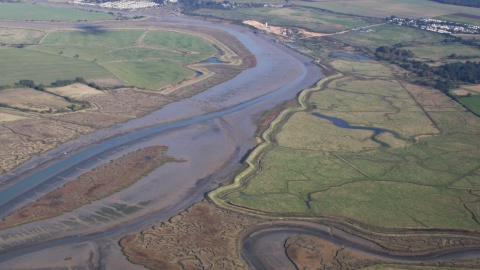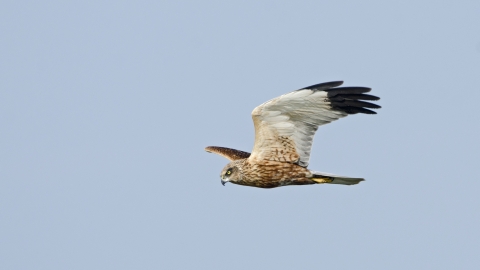
Photo - Terry Joyce

Photo - David Tipling / 2020VISION
Howlands Marsh Nature Reserve
Know before you go
Dogs
Dogs permitted on the public footpath only, must be kept on leads
When to visit
Opening times
Accessible at all timesBest time to visit
Winter for overwintering birds, Spring/Summer for great views of Marsh HarriersAbout the reserve
Sea Wormwood and Golden Samphire grow among the mud in the saltmarsh that fringes the seawall where Flag and St Osyth creeks meet.
Look out across the reserve at a wild landscape of hummocky grassland filled with Reeds, Sedge, Spiny Restharrow and Spring Whitlow-grass, interlaced with dykes and fleets, where you can find Water-Crowfoot, Lesser Water-parsnip and Tufted Forget-Me-Not thriving.
Skylarks, Lapwing, Reed Warblers and Reed Bunting can be seen flying over the grassland, choosing to stay and breed here in the spring.
Listen out for the distinctive calls of overwintering Brent Geese and other wildfowl in winter, grazing among flocks of Curlew. Barn Owls and Marsh Harriers can often be seen gliding over the reserve in search of prey.
